
The Indianapolis 500, formally known as the Indianapolis 500-Mile Race, and commonly called the Indy 500, is an annual automobile race held at Indianapolis Motor Speedway (IMS) in Speedway, Indiana, United States, an enclave suburb of Indianapolis. The event is traditionally held over Memorial Day weekend, usually the last weekend of May. It is contested as part of the IndyCar Series, the top level of American open-wheel car racing, a formula colloquially known as "Indy car racing". The track itself is nicknamed the "Brickyard", as the racing surface was paved in brick in the fall of 1909. One yard of brick remains exposed at the start/finish line. The event, billed as The Greatest Spectacle in Racing, is considered part of the Triple Crown of Motorsport along with the 24 Hours of Le Mans and the Monaco Grand Prix, with which it typically shares a date.

Championship Auto Racing Teams (CART) was a sanctioning body for American open-wheel car racing that operated from 1979 to 2003. It sanctioned the PPG Indy Car World Series from 1979 until dissolving after the 2003 season.
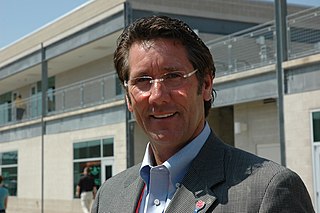
Anton Hulman "Tony" George is the former Chairman, President, and CEO of the Indianapolis Motor Speedway and Hulman & Company, serving from 1989 to 2009. He was also formerly on the Board of Directors of both entities. He founded the Indy Racing League and co-owned Vision Racing.
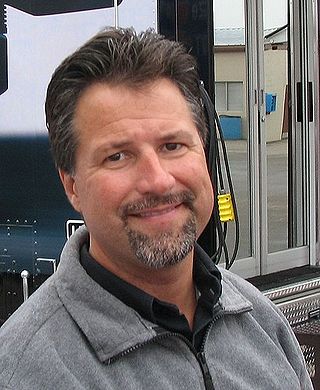
Michael Mario Andretti is an American former racing driver, and current team owner. Statistically one of the most successful drivers in the history of American open-wheel car racing, Andretti won the 1991 CART championship, and amassed 42 race victories, the most in the CART era and fourth-most all time.

Homestead–Miami Speedway is a motor racing track located in Homestead, Florida. The track, which has several configurations, has promoted several series of racing, including NASCAR, the IndyCar Series, the WeatherTech SportsCar Championship series, and the Championship Cup Series.
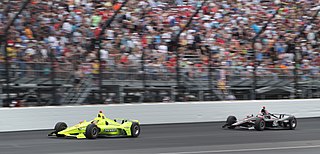
American open-wheel car racing, also known as Indy car racing, is a category of professional automobile racing in the United States. As of 2022, the top-level American open-wheel racing championship is sanctioned by IndyCar.

Champ Car World Series (CCWS) was the series sanctioned by Open-Wheel Racing Series Inc., or Champ Car, a sanctioning body for American open-wheel car racing that operated from 2004 to 2008. It was the successor to Championship Auto Racing Teams (CART), which sanctioned the PPG Indy Car World Series from 1979 until dissolving after the 2003 season.
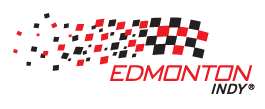
The Edmonton Indy was a round of the IndyCar Series held at a temporary circuit set up at the Edmonton City Centre Airport near the downtown area of Edmonton, Alberta, Canada. It was originally launched in 2005, as a race in the Champ Car World Series called the West Edmonton Mall Grand Prix, and was one of three Champ Car races added to the 2008 IndyCar Series following the merger of the two American open-wheel racing series.
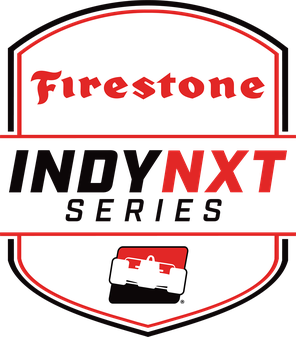
Indy NXT, previously Indy Lights, is an American developmental automobile racing series sanctioned by IndyCar, currently known as INDY NXT by Firestone for sponsorship reasons. Indy NXT is the highest step on the Road to Indy, a program of racing series leading up to the IndyCar Series.

The Grand Prix of Cleveland was an Indy car event in the CART series, held annually at Burke Lakefront Airport in Cleveland, Ohio, United States. The race was most recently held in 2007. After the 2008 open wheel unification, the 2008 race was cancelled. Attempts to revive the race have not yet come to fruition.
The 1979 SCCA/CART Indy Car Series was the inaugural season for the CART Indy car series. It was the first national championship season of American open wheel racing sanctioned by CART. The season consisted of 14 races. Rick Mears was the national champion, and the rookie of the year was Bill Alsup. The 1979 Indianapolis 500 was sanctioned by USAC, but counted towards the CART points championship. Rick Mears won the Indy 500, his first of four victories in the event.

The Firestone Firehawk 600 was a planned American open-wheel car race scheduled for April 29, 2001 at the Texas Motor Speedway in Fort Worth, Texas, United States. The event was sanctioned by Championship Auto Racing Teams (CART) and was the third round of the 2001 CART season. It was scheduled for 248 laps around the 1.5-mile (2.4 km) oval track. However, the race was postponed and ultimately canceled due to concerns about driver safety, as the high speeds the cars sustained through the circuit's long corners could potentially have led to drivers experiencing g-force induced loss of consciousness. It was the only race in CART history that was canceled outright for safety reasons. Kenny Bräck was awarded one point for qualifying on pole position at an average speed of 233.344 miles per hour (375.531 km/h).

The 1980 CART PPG Indy Car World Series season was the second in the CART era of U.S. open-wheel racing. It consisted of twelve races, beginning in Ontario, California on April 13 and concluding in Avondale, Arizona on November 8. The PPG Indy Car World Series Drivers' Champion and Indianapolis 500 winner was Johnny Rutherford. Rookie of the Year was Dennis Firestone. The entire season, including the 64th Indianapolis 500, was to be co-sanctioned by both the USAC and CART under the banner of the Championship Racing League (CRL). However, USAC withdrew from the arrangement after five races.
The 1982 CART PPG Indy Car World Series season, the fourth in the CART era of U.S. open-wheel racing, consisted of 11 races, beginning in Avondale, Arizona on March 28 and concluding at the same location on November 6. The PPG Indy Car World Series Drivers' Champion was Rick Mears. Rookie of the Year was Bobby Rahal.
The 2008 Champ Car World Series season would have been the 5th season of the Champ Car World Series and 30th season of the series dating back to the 1979 formation of Championship Auto Racing Teams (CART). It was scheduled to begin on April 20, 2008, and end on November 9. The season was canceled on February 21, 2008, because of the buyout of Champ Car by the rival IndyCar Series, resulting in the reunification of American open-wheel racing.

The Meadowlands Grand Prix was a CART IndyCar race held at the Meadowlands Sports Complex in East Rutherford, New Jersey from 1984 until 1991. The event was the first major auto race in the New York City metropolitan area since the 1937 Vanderbilt Cup, and came with high expectations, including the potential of rivaling the Indianapolis 500 in stature, and crowds of up to 60,000.
The Hoosier Hundred is a USAC Silver Crown Series race scheduled for Lucas Oil Indianapolis Raceway Park as of 2023. It is a revival of the original race held from 1953-2020 at the Indiana State Fairgrounds Speedway, a one-mile dirt oval in Indianapolis, Indiana. The race was first held in 1953, and through 1970 was part of the National Championship.

The 2016 Verizon IndyCar Series was the 21st season of the IndyCar Series and the 105th season of American open wheel racing. It included the 100th running of the Indianapolis 500. Scott Dixon entered as the reigning Drivers' Champion, while Chevrolet entered the season as the reigning Manufacturer's Champion. Upon season's end, Simon Pagenaud was crowned Drivers' Champion, while Chevrolet retained the Manufacturer's Championship.

The 2020 NTT IndyCar Series was the 25th season of the IndyCar Series and the 109th official championship season of American open wheel racing. The premier event was the 2020 Indianapolis 500. Josef Newgarden entered the season as the defending National Champion. Honda entered as defending Manufacturers' Cup champion for the second consecutive season. It was the first year under Penske management after they took over in late 2019.

The COVID-19 pandemic has caused disruption to motorsport across the world, mirroring its impact across all sports. Across the world and to varying degrees, events and competitions have been cancelled or postponed.
















